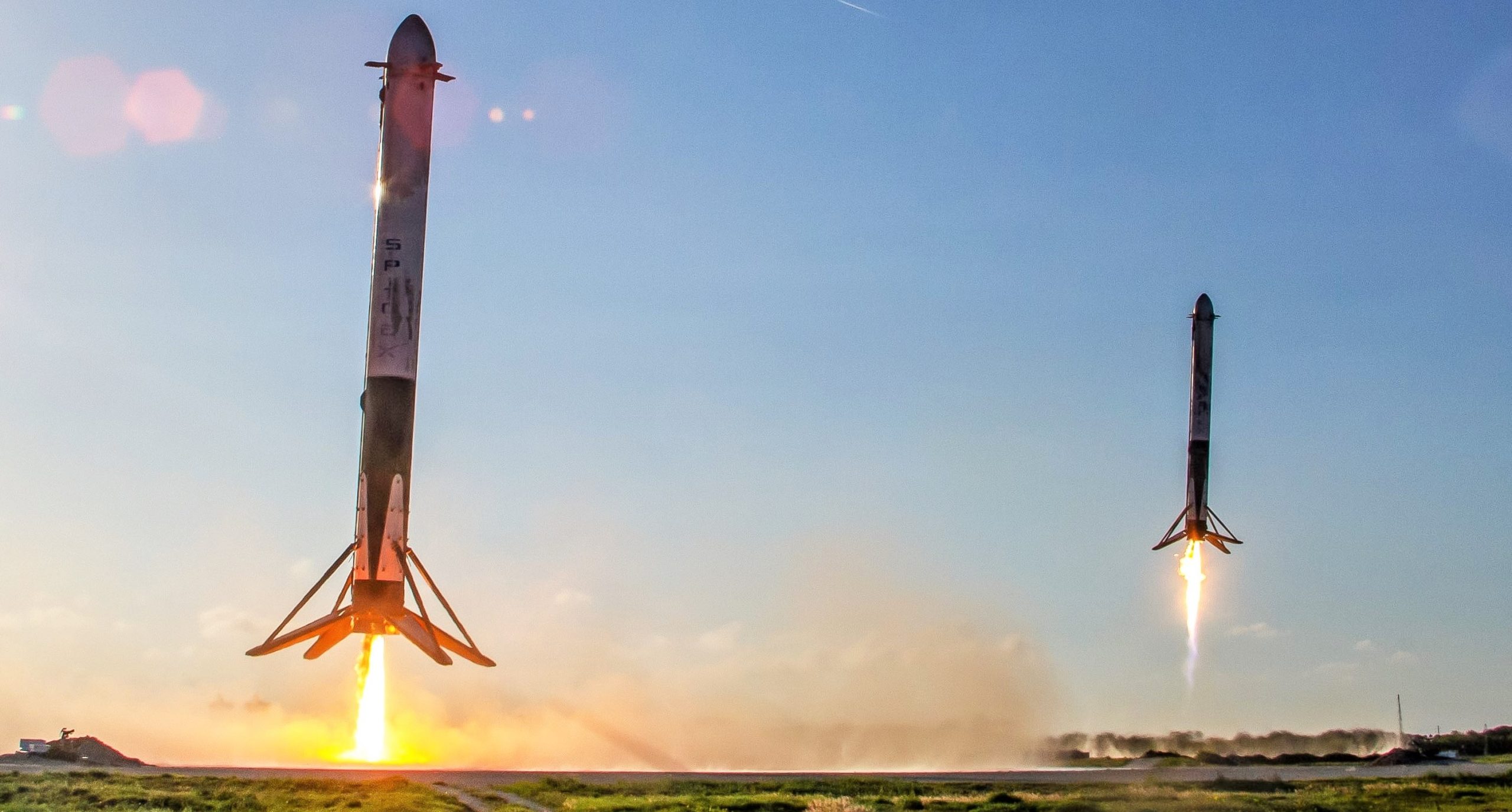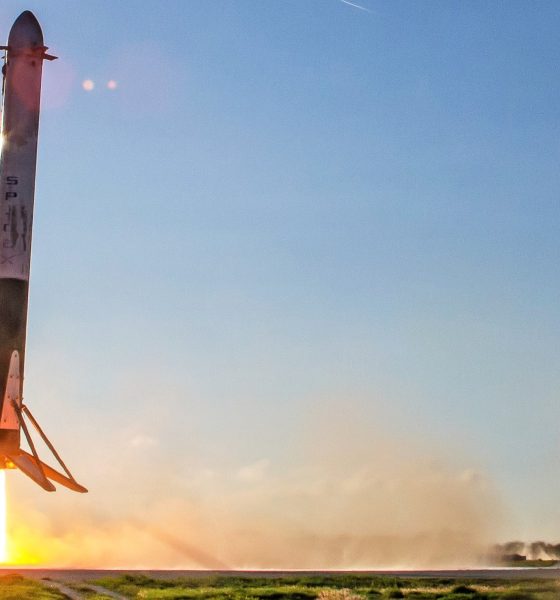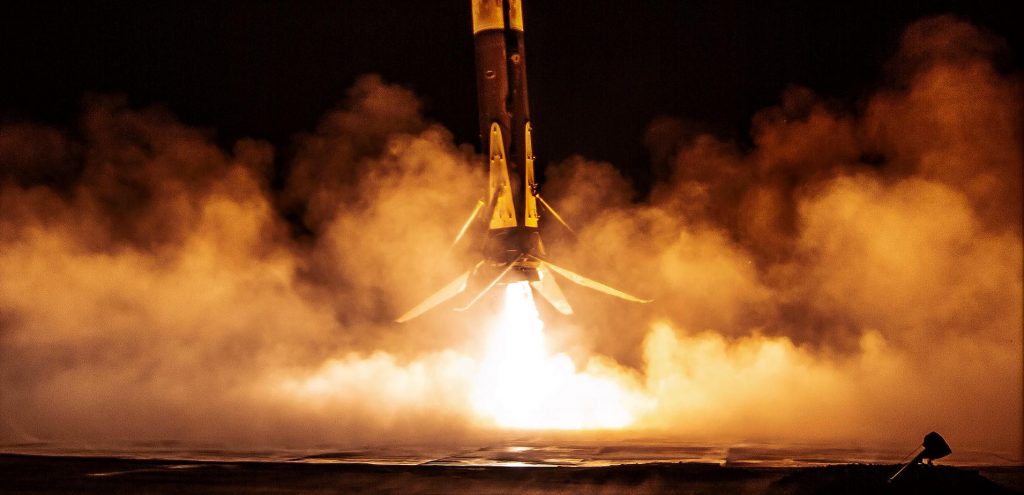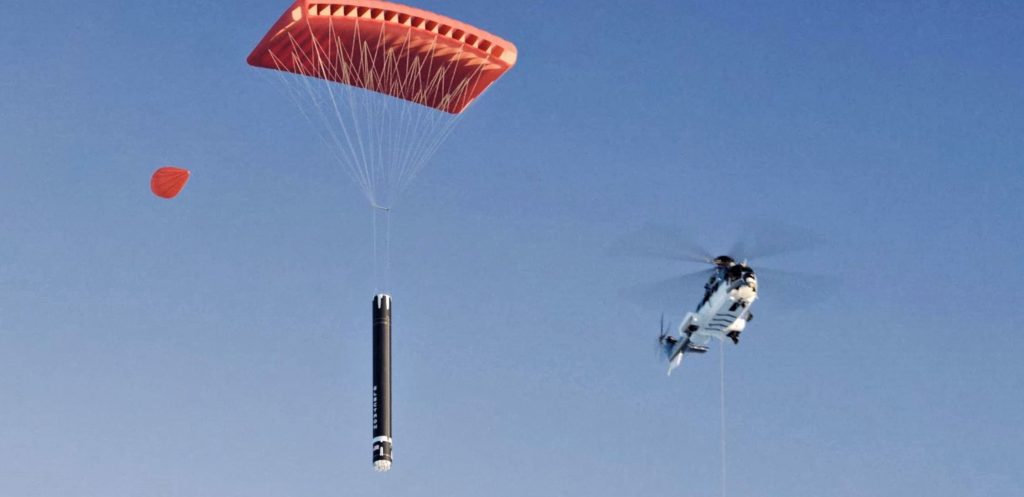

News
SpaceX competitor ULA CEO still questions the economic value of reusable rockets
SpaceX has made a name for itself for being one of the only private space companies today to deploy a fleet of rockets that are capable of being reused for multiple missions. Elon Musk has sworn by the economics of rocket reusability, and this is shown by SpaceX’s launch prices compared to competitors that use expendable rockets. Yet for Tory Bruno, the CEO of ULA, the economic sense behind reusable rockets like the Falcon 9 is still questionable.
Interestingly enough, the ULA is poised to use Blue Origin’s BE-4 engines for the first stage of its expendable Vulcan rocket. Like SpaceX, Blue Origin’s vision of spaceflight involves rockets that can be reused multiple times before they are retired. ULA, for its part, notes that it may decide to recover and reuse the Vulcan’s BE-4 engines down the road, using a system that disengages the units after launch and having them fall back through the atmosphere while being protected by an inflatable hypersonic shield.
A helicopter would then be positioned to catch the engine section midair while it makes its descent. ULA has come up with a noteworthy name for this system: the Sensible Modular Autonomous Return Technology, or SMART approach. In a statement to Aviation Week, ULA CEO Tory Bruno explained the strategy behind the company’s SMART strategy.

“It does not impact, in any significant way, the overall performance of the launch vehicle because you don’t have to save fuel to fly home with. You still get to burn up all your fuel, separate your engine, which is the most expensive piece, and recover it,” Bruno said.
Elaborating further, the ULA CEO mentioned that ultimately, he believes that the economics of reusable rockets is still up for question. Bruno argued that it is still difficult to ensure that using reusable rockets instead of expendable machines actually saves money.
“We have not really changed our assessment over the last couple of years because we have yet to see the other forms of reusability—flyback or propulsive return to Earth—demonstrate economic sustainability on a recurring basis. It’s pretty darn hard to make that actually save money… We’ve seen nothing yet that changes our analysis on that,” the ULA CEO said.
The ULA CEO’s points about the possible lack of savings on reusable rockets put him in stark contrast with other noteworthy leaders in the space industry. Apart from SpaceX CEO Elon Musk, fellow billionaire Jeff Bezos of Blue Origin is also intently focused on using reusable rockets. Even Rocket Lab CEO Peter Beck, whose company designs and launches small rockets, has embraced the idea of reusing previously-flown boosters.

In a statement in August 2019, for example, Beck noted that he actually had to “eat his hat” when it came to reusing his company’s rockets. “For a long time, I said we weren’t going to do reusability. This is one of those occasions where I have to eat my hat,” the Rocket Lab CEO said.
That being said, the fact that the ULA CEO is considering reusing the Vulcan’s BE-4 engines may be considered as a small win for reusable rockets. Perhaps in the near future, Bruno would see exactly why SpaceX has grown so much over the years, and why the company is practically launching its Starlink satellite internet system at a minimal cost.
“We view (rocket reuse) as sort of a journey. We’re going to start with the engines because we’re pretty sure we can save money with that and pass those savings on right away. As we learn more by doing, we’ll continue to assess other valuable parts of the rocket, and we may discover that we can do that there as well.
“There is one funny thing about reusability. As you make your rocket less expensive, and you make parts of your rocket less expensive, it’s harder to close a business case on reuse because the thing you’re recovering isn’t as valuable. There’s a balance there,” Bruno said.

Cybertruck
Tesla updates Cybertruck owners about key Powershare feature

Tesla is updating Cybertruck owners on its timeline of a massive feature that has yet to ship: Powershare with Powerwall.
Powershare is a bidirectional charging feature exclusive to Cybertruck, which allows the vehicle’s battery to act as a portable power source for homes, appliances, tools, other EVs, and more. It was announced in late 2023 as part of Tesla’s push into vehicle-to-everything energy sharing, and acting as a giant portable charger is the main advantage, as it can provide backup power during outages.
Cybertruck’s Powershare system supports both vehicle-to-load (V2L) and vehicle-to-home (V2H), making it flexible and well-rounded for a variety of applications.
However, even though the feature was promised with Cybertruck, it has yet to be shipped to vehicles. Tesla communicated with owners through email recently regarding Powershare with Powerwall, which essentially has the pickup act as an extended battery.
Powerwall discharge would be prioritized before tapping into the truck’s larger pack.
However, Tesla is still working on getting the feature out to owners, an email said:
“We’re writing to let you know that the Powershare with Powerwall feature is still in development and is now scheduled for release in mid-2026.
This new release date gives us additional time to design and test this feature, ensuring its ability to communicate and optimize energy sharing between your vehicle and many configurations and generations of Powerwall. We are also using this time to develop additional Powershare features that will help us continue to accelerate the world’s transition to sustainable energy.”
Owners have expressed some real disappointment in Tesla’s continuous delays in releasing the feature, as it was expected to be released by late 2024, but now has been pushed back several times to mid-2026, according to the email.
Foundation Series Cybertruck buyers paid extra, expecting the feature to be rolled out with their vehicle upon pickup.
Cybertruck’s Lead Engineer, Wes Morrill, even commented on the holdup:
As a Cybertruck owner who also has Powerwall, I empathize with the disappointed comments.
To their credit, the team has delivered powershare functionality to Cybertruck customers who otherwise have no backup with development of the powershare gateway. As well as those with solar…
— Wes (@wmorrill3) December 12, 2025
He said that “it turned out to be much harder than anticipated to make powershare work seamlessly with existing Powerwalls through existing wall connectors. Two grid-forming devices need to negotiate who will form and who will follow, depending on the state of charge of each, and they need to do this without a network and through multiple generations of hardware, and test and validate this process through rigorous certifications to ensure grid safety.”
It’s nice to see the transparency, but it is justified for some Cybertruck owners to feel like they’ve been bait-and-switched.
News
Tesla’s northernmost Supercharger in North America opens

Tesla has opened its northernmost Supercharger in Fairbanks, Alaska, with eight V4 stalls located in one of the most frigid cities in the U.S.
Located just 196 miles from the Arctic Circle, Fairbanks’s average temperature for the week was around -12 degrees Fahrenheit. However, there are plenty of Tesla owners in Alaska who have been waiting for more charging options out in public.
There are only 36 total Supercharger stalls in Alaska, despite being the largest state in the U.S.
Eight Superchargers were added to Fairbanks, which will eventually be a 48-stall station. Tesla announced its activation today:
North America’s northernmost Supercharger Fairbanks, AK (8 stalls) opened to public. https://t.co/M4l04DZ6B5 pic.twitter.com/zyL6bDuA93
— Tesla Charging (@TeslaCharging) December 12, 2025
The base price per kWh is $0.43 at the Fairbanks Supercharger. Thanks to its V4 capabilities, it can charge at speeds up to 325 kW.
Despite being the northernmost Supercharger in North America, it is not even in the Top 5 northernmost Superchargers globally, because Alaska is south of Norway. The northernmost Supercharger is in Honningsvåg, Norway. All of the Top 5 are in the Scandanavian country.
Tesla’s Supercharger expansion in 2025 has been impressive, and although it experienced some early-quarter slowdowns due to V3-to-V4 hardware transitions, it has been the company’s strongest year for deployments.
🚨🚨 Tesla Supercharging had a HUGE year, and they deserve to be recognized.
🍔 Opened Tesla Diner, a drive-in movie theater with awesome, Chef-curated cuisine
🔌 Gave access to Superchargers to several EV makers, including Hyundai, Genesis, Mercedes-Benz, Kia, Lucid, Toyota,… pic.twitter.com/yYT2QEbqoW
— TESLARATI (@Teslarati) December 10, 2025
Through the three quarters of 2025, the company has added 7,753 stations and 73,817 stalls across the world, a 16 percent increase in stations and an 18 percent increase in stalls compared to last year.
Tesla is on track to add over 12,000 stalls for the full year, achieving an average of one new stall every hour, an impressive statistic.
Recently, the company wrapped up construction at its Supercharger Oasis in Lost Hills, California, a 168-stall Supercharger that Tesla Solar Panels completely power. It is the largest Supercharger in the world.
News
Tesla shocks with latest Robotaxi testing move
Why Tesla has chosen to use a couple of Model S units must have a reason; the company is calculated in its engineering and data collection efforts, so this is definitely more than “we just felt like giving our drivers a change of scenery.”

Tesla Model S vehicles were spotted performing validation testing with LiDAR rigs in California today, a pretty big switch-up compared to what we are used to seeing on the roads.
Tesla utilizes the Model Y crossover for its Robotaxi fleet. It is adequately sized, the most popular vehicle in its lineup, and is suitable for a wide variety of applications. It provides enough luxury for a single rider, but enough room for several passengers, if needed.
However, the testing has seemingly expanded to one of Tesla’s premium flagship offerings, as the Model S was spotted with the validation equipment that is seen entirely with Model Y vehicles. We have written several articles on Robotaxi testing mules being spotted across the United States, but this is a first:
🚨 Tesla is using Model S vehicles fitted with LiDAR rigs to validate FSD and Robotaxi, differing from the Model Ys that it uses typically
Those Model Y vehicles have been on the East Coast for some time. These Model S cars were spotted in California https://t.co/CN9Bw5Wma8 pic.twitter.com/UE55hx5mdd
— TESLARATI (@Teslarati) December 11, 2025
Why Tesla has chosen to use a couple of Model S units must have a reason; the company is calculated in its engineering and data collection efforts, so this is definitely more than “we just felt like giving our drivers a change of scenery.”
It seems to hint that Tesla could add a premium, more luxury offering to its Robotaxi platform eventually. Think about it: Uber has Uber Black, Lyft has Lyft Black. These vehicles and services are associated with a more premium cost as they combine luxury models with more catered transportation options.
Tesla could be testing the waters here, and it could be thinking of adding the Model S to its fleet of ride-hailing vehicles.
Reluctant to remove the Model S from its production plans completely despite its low volume contributions to the overall mission of transitioning the world to sustainable energy, the flagship sedan has always meant something. CEO Elon Musk referred to it, along with its sibling Model X, as continuing on production lines due to “sentimental reasons.”
However, its purpose might have been expanded to justify keeping it around, and why not? It is a cozy, premium offering, and it would be great for those who want a little more luxury and are willing to pay a few extra dollars.
Of course, none of this is even close to confirmed. However, it is reasonable to speculate that the Model S could be a potential addition to the Robotaxi fleet. It’s capable of all the same things the Model Y is, but with more luxuriousness, and it could be the perfect addition to the futuristic fleet.








